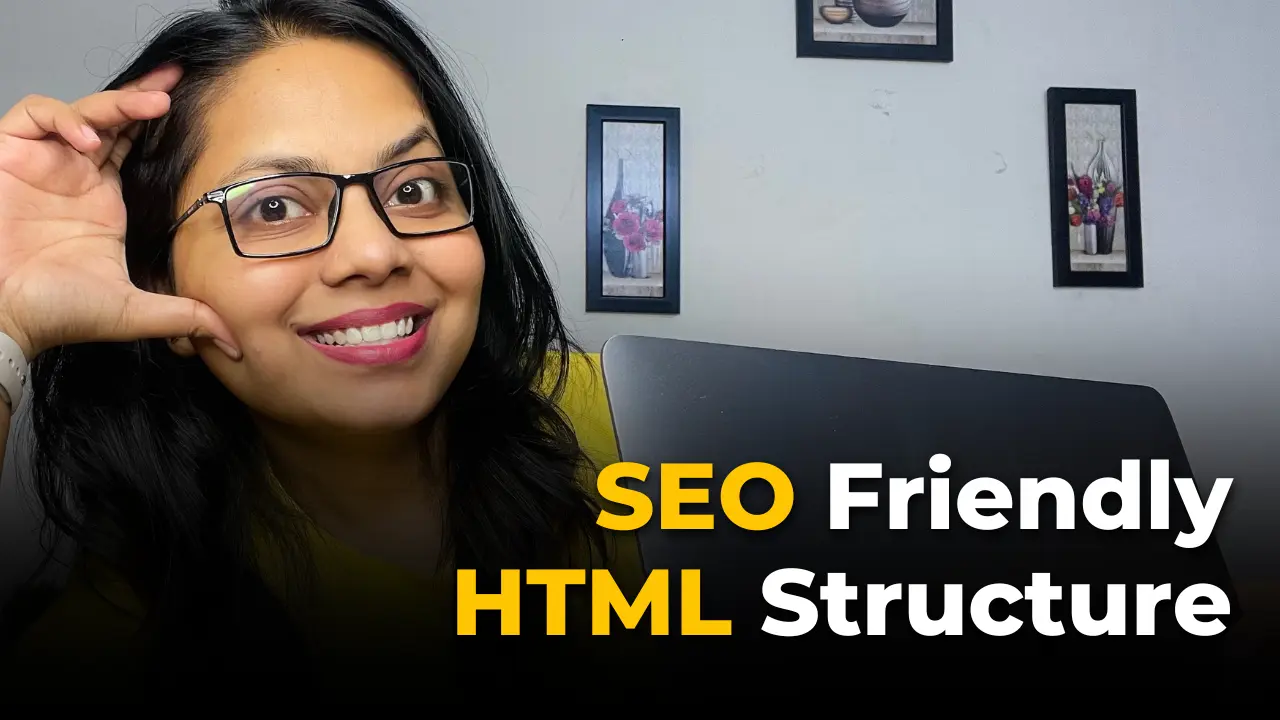An SEO-friendly HTML structure is crucial for improving website visibility. Therefore, search engines prioritize well-structured pages. In addition, proper header tags enhance readability. Moreover, meta descriptions significantly influence click-through rates.
Header Section (Head)
- Title Tag: The title tag is super important for SEO because it acts as the main descriptor for your webpage. Make sure it’s unique and descriptive, ideally between 55-60 characters. This length helps it fit neatly in search engine results without getting cut off. A well-crafted title can boost your click-through rates by accurately reflecting what your page is all about.
- Meta Description: This meta tag gives a brief summary of your webpage’s content. Aim for a compelling meta description that’s around 155-160 characters. It should be enticing enough to encourage users to click through from search results. Don’t forget to include relevant keywords while making it engaging to attract potential visitors to your site.
- Meta Keywords (optional): Although many search engines don’t really pay attention to this tag anymore, it can still be helpful to include some relevant keywords related to your page’s content, separated by commas. Just be cautious not to overdo it; you want to make sure it accurately reflects the content and doesn’t come off as keyword stuffing.
- Viewport Meta Tag: This tag is essential for responsive web design. It controls how your site looks on mobile devices by setting the width and scaling of the viewport. Including a viewport meta tag ensures that your website is user-friendly across different devices, enhancing the overall experience for visitors.
- Robots Meta Tag: This tag tells search engine crawlers how to index your page. By setting it to “index, follow,” you’re telling search engines to index the page and follow the links on it. Proper use of this tag is key to controlling how visible your page is in search engine results.
Body Section
1. Header Tags (H1-H6): These tags help you structure your content hierarchically. Use the H1 tag for your main heading, and H2 to H6 tags for subheadings. Using header tags correctly makes your content easier to read for users and helps search engines understand how your content is organized.
2. Semantic Elements:
- Header: This element usually contains introductory content or navigation links and serves as the site header. It’s important for the overall structure of your webpage and contributes to SEO and accessibility.
- Nav: This element marks your main navigation links, making it easier for users to find their way around your site. A clear navigation structure enhances user experience and helps search engines grasp how your site is organized.
- Main: This element wraps up the primary content of the document. Clearly defining the main area allows both users and search engines to identify your primary content apart from sidebars and footers.
- Section: This element groups related content, creating logical divisions within your webpage. Sections improve navigation for users and make your content easier to digest.
- Article: This element signifies standalone content, like a blog post or news article. It’s beneficial for SEO, allowing search engines to recognize and rank unique pieces of content.
- Footer: This element usually contains information that, while not central to the main content, is still important—like copyright info, site links, or contact details.
3. Content Structure:
- Introduction: Your introduction should set the stage, giving context and a hook to grab the reader’s attention and outlining what they can expect from the content ahead.
- Main Content: This is where you delve into the core of your page. Present detailed information, arguments, or narratives in a well-organized, engaging, and informative manner.
- Conclusion: Wrap up your content by summarizing key points and possibly including calls to action to encourage readers to engage further with your site or content.
4. Image Optimization:
- Alt Tags: Adding descriptive alt tags to images is vital for accessibility, as it provides text alternatives for those using screen readers. Plus, it helps with SEO by giving context to search engines.
- Title Tags: While optional, title tags can provide additional info about an image when users hover over it, enhancing their experience.
- Compression: Reducing image file sizes is crucial for improving page load times, which can have a significant impact on user experience and SEO rankings.
5. Internal Linking:
- Anchor Text: Using descriptive anchor text for internal links helps users understand where a link will take them. It also contributes to SEO by improving the relevance of the linked pages.
- Relevant Links: Including links to related content encourages users to explore more of your site, which can lower bounce rates and enhance overall engagement.
Footer Section
1. Contact Information:
- Address: Providing a physical address boosts credibility, especially for local businesses, and aids local SEO efforts.
- Phone Number: Including a contact number makes it easy for users to reach out, fostering trust and enhancing customer service.
- Email: An email address gives users a direct way to contact you for inquiries or support.
2. Social Media Links: Adding links to your social media profiles encourages users to connect with you across different platforms, increasing your online presence and engagement.
3. Copyright Information: Typically, this includes the current year and your company name, signaling ownership of the content and providing legal protection.
4. Sitemap Link: Providing a link to your XML sitemap helps both users and search engines navigate your site structure more easily, improving overall SEO.
Additional Tips
1. Mobile-Friendliness: Ensuring your site is responsive is critical since many users access websites on mobile devices. A mobile-friendly design improves user experience and is favored by search engines.
2. Page Speed: Optimizing images, minimizing code, and using a reliable server can significantly boost your site’s loading times, positively affecting user experience and SEO.
3. SSL Encryption: Using HTTPS through SSL certificates secures user data and builds trust. It’s also a ranking factor for search engines.
4. Content Freshness: Keeping your content up-to-date with fresh, relevant information engages your audience and signals to search engines that your site is active and valuable.
5. Structured Data: Implementing structured data using Schema.org vocabulary can enhance your search engine listings with rich snippets, improving click-through rates.
6. Canonical URLs: Using canonical URLs helps avoid duplicate content issues by indicating the preferred version of a page to search engines.
7. 301 Redirects: Setting up permanent redirects ensures users and search engines are directed to the correct page, preserving the SEO value of the original URL.
8. XML Sitemap: Regularly updating and submitting your XML sitemap to Google Search Console helps search engines understand your site’s structure and index it effectively.
Tools for SEO Auditing
1. Google Search Console: This essential tool allows you to monitor your site’s performance in search results and identify any issues affecting visibility.
2. Google Analytics: This platform provides valuable insights into user behavior, traffic sources, and engagement metrics, helping you fine-tune your SEO strategy.
3. SEMrush: A comprehensive tool for keyword research, competitor analysis, and tracking the health of your SEO campaigns.
4. Ahrefs: Known for its extensive backlink analysis, keyword research, and site audit features, Ahrefs is a favorite among SEO professionals.
5. Moz Pro: This suite offers various tools for SEO insights, including keyword tracking, site audits, and page optimization recommendations.
6. Screaming Frog: This tool allows for detailed site crawling, helping identify SEO issues like broken links, duplicate content, and more.
HTML Structure Example
Here’s a simple example of how you might structure your HTML
<!DOCTYPE html>
<html lang="en">
<head>
<title>Example Title</title>
<meta name="description" content="Example description">
<meta name="viewport" content="width=device-width, initial-scale=1">
</head>
<body>
<header>
<nav>
<!-- Main navigation
<ul>
<li><a href="#home">Home</a></li>
<li><a href="#about">About</a></li>
<li><a href="#services">Services</a></li>
<li><a href="#contact">Contact</a></li>
</ul>
</nav>
</header>
<main>
<h1>Example Heading</h1>
<section>
<h2>Introduction</h2>
<p>This is where the introduction goes, capturing the reader's attention.</p>
<h2>Main Content</h2>
<p>Here is where the main content will be presented, providing detailed information.</p>
<h2>Conclusion</h2>
<p>This section wraps up the content, summarizing key points and encouraging further action.</p>
</section>
</main>
<footer>
<address>
<p>123 Example Street, City, Country</p>
<p>Phone: (123) 456-7890</p>
<p>Email: info@example.com</p>
</address>
<div>
<a href="https://www.facebook.com/example">Facebook</a>
<a href="https://www.twitter.com/example">Twitter</a>
<a href="https://www.instagram.com/example">Instagram</a>
</div>
<p>© 2024 Example Company. All rights reserved.</p>
<p><a href="/sitemap.xml">Sitemap</a></p>
</footer>
</body>
</html>For a practical implementation of SEO-friendly web structures, check out my detailed guide here DesignWithRehana. Also, visit my YouTube channel for video tutorials on web development.

